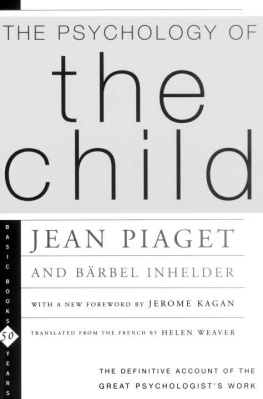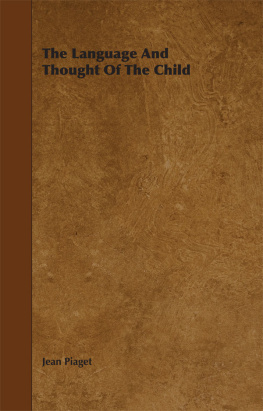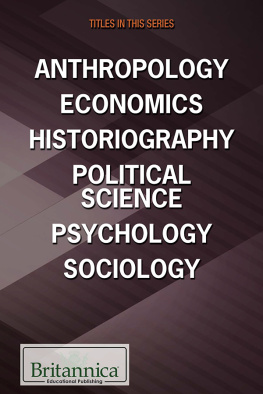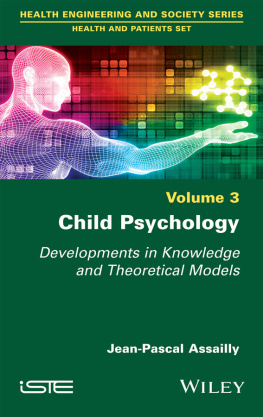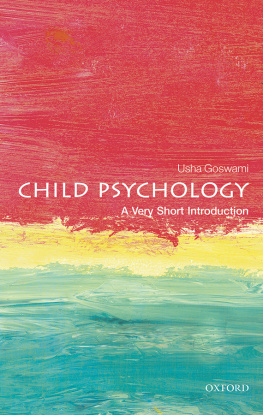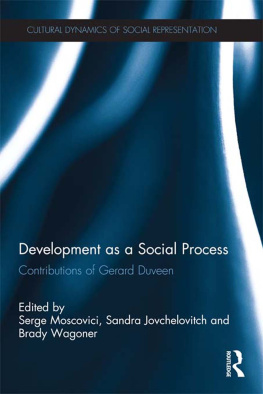



CONTENTS
ix
xv
xvii
1. Stimulus-Response and Assimilation
2. Stage I
3. Stage 2
4. Stage 3
5. Stages 4 and 5
6. Stage 6
1. The Permanent Object
2. Space and Time
3. Causality
1. The Initial Adualism
2. Intermediary Reactions
3. "Object" Relations
1. Constancy of Form
2. Constancy of Size
3. The Permanent Object and Perception
4. Perceptual Causality
1. Methods
2. Projective Concepts and Perceptions
3. Perceptual Constancies and Operatory Conservations
4. Situation 4
5. Conclusion
1. The Appearance of the Semiotic Function
2. The Role of Imitation
3. Symbols and Signs
1. The Problems Raised by the Image
2. Two Types of Images
3. Copy Images
4. Kinetic and Transformational Images
5. Images and Operations
1. Evolution
2. Language and Thought
3. Language and Logic
4. Language and Operations
5. Conclusion
1. Notions of Conservation
2. The Concrete Operations
3. Seriation
4. Classification
5. Number
6. Space
7. Time and Speed
1. Evolution
2. The Problem
3. Socialization
1. The Genesis of Duty
2. Heteronomy
3. Moral Realism
4. Autonomy
1. The Combinatorial System
2. Combinations of Objects
3. Propositional Combinations
1. Proportions
2. Double Systems of Reference
3. Hydrostatic Equilibrium
4. Notions of Probability
1. Elasticity
2. The Pendulum
FOREWORD
Historians of' science agree that the ease with which a new theoretical position finds broad acceptance depends on the soundness of its empirical support, the logical coherence of its arguments, and congruence with the ethical premises of the local community. But there is a fourth factor that historians have acknowledged less often. This is the degree to which features of the new theory transform the essential, or the less essential, components of the ideas it is trying to replace.
Sigmund Freud found a friendlier audience in America than Jean Piaget did, despite the fact that there were no serious differences in quality of evidence or coherence of argument. But psychoanalytic concepts gained a loyal following earlier because they transformed the less, rather than the most, esr;ential premises of nineteenth-century ethical and theoretical thought about human development. Late nineteenth-century physicians agreed with Freud that individuals varied in the amount of psychological energy available for mental work, but they did not conceptualize this force as especially sexual in nature. They also believed in the power of early experience to shape the child's mind and heart, but thought that the primary influence of the family was on the child's character rather than on the establishment of conflicts and defenses against anxiety. Finally, clinicians were convinced of the usefulness of therapeutic interventions with hysterical patients, but favored somatic therapy over probing introspective analyses by patients lying supine on a couch.
By contrast, Piaget's core ideas transformed the more fundamental features of earlier twentieth-century assumptions about intellectual development. As a result, Piaget's work did not become popular until the mid--1960s, when John Flavell's The Developmental Psychology of Jean Piaget (1963) made the seminal ideas of the Geneva scholar comprehensible.
A central notion in Piaget's ambitious project is that intellectual competence represents an integrated ensemble of operations built from reflections on the child's actions in the world. A second seminal claim is that intellectual development passes through a series of connected stages, in which some knowledge from an earlier stage is incorporated into the next. The third critical assumption, Platonic in flavor, is that a unified cognitive competence that serves adaptation is the telos of development.
None of these ideas could be assimilated easily to the behaviorism that dominated American psychology when Piaget's books were being translated into English. The central concept in behaviorism was an association between a stimulus and a response established because an external event, called a reinforcement, followed soon after an agent's behavior. The attractiveness of the concept of reinforcement, which was never defined independently, rested in part on the presumption that animals and humans acted in order to maximize pleasure and to minimize pain. This ancient idea, combined with the claim that all talents were acquired because organisms were motivated to obtain external reinforcements, was foreign to Piaget's thought.
Piaget saw that a foundation built of stimulus-response bonds could not sustain developmental stages. If a child was a collection of stimulus-response links, then there was no special time when a unified integration of the collection should occur. Hence, there could be no inevitable developmental sequence. A Platonic telos toward which all children grew was also alien to behavioristic discourse because each adolescent profile was presumed to be a function of the unique history of prior contingencies, and no particular outcome was inherently more natural or more inevitable than any other.
The resistance to Piaget was aided by his choice of concepts, for he used words not easily translated into the everyday vocabulary of American psychologists. Equilibration, regulation, logico-mathematical structures, operations, and ensemble were both more abstract and harder to imagine than conditioned associations between a child hearing a mother say "See the dog" and seeing the mother smile as her child points to an animal and utters `Doggie." It was easier to imagine one group of neurons becoming active upon the mother's statement "See the dog" and linking up with a second set of neurons activated as the child pointed at and named the animal. It was considerably more difficult to visualize what happened in the brain when Iogico-mathematical structures were engaged and equilibration was attained.
Nonetheless, Piaget's ideas finally won the enthusiastic loyalty of a large number of developmental scientists, because the empirical demonstrations were reliable, the obvious flaws in the behavioristic account could not be denied, curiosity about cognitive development replaced earlier concerns with the growth of speech and conduct, and, finally, the problems inherent in generalizing results from rats running mazes to children learning to read could no longer be ignored.
The Psychology of the Child, published in 1969 as a brief integration of the core Piagetian concepts, helped many thousands of students comprehend Piaget's mission and theoretical tools. Time, like the sculptor's daily chiseling of a slab of marble, has revealed three prominent peaks in Piaget's opus: the attainment of object permanence in the first year, concrete operations as children begin school, and formal operational competence at adolescence. Although the empirical foundation for the first two ideas is irrefutable, I believe that future historians will decide that formal operations represented Piaget's most original insight. Parents had been playing games of hide and seek with infants for millennia and knew implicitly that infants under six or seven months of age behaved as if objects out of sight were out of mind. The Catholic church and English common law understood, long before Piaget was born, that an important advance in intellectual life occurred around seven years of age. But no philosopher, naturalist, physician, or commentator on children before 1900 had suggested that the intellectual changes occurring at puberty placed adolescent thought in a special developmental category. The adolescents' realization that they can combine sets of classes and relations into propositions with a formal logical structure liberated them from the restraints of reality and permitted them to think about events that were not experienced or were unrealizable. The formal operational competences also permitted youth to come to the conclusion that they had exhausted all possible solutions to a personal problem. If no solution were possible, an adolescent could became vulnerable to depression and, in rare cases, attempt suicide.

